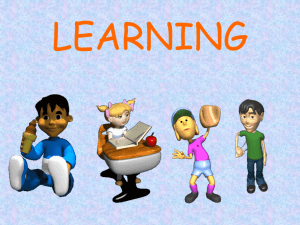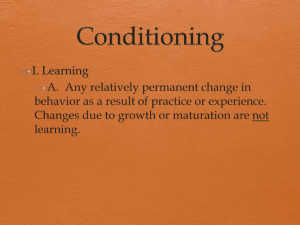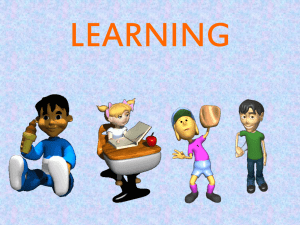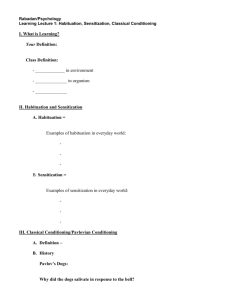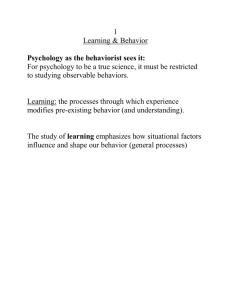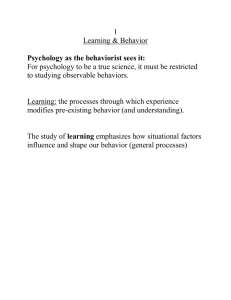key
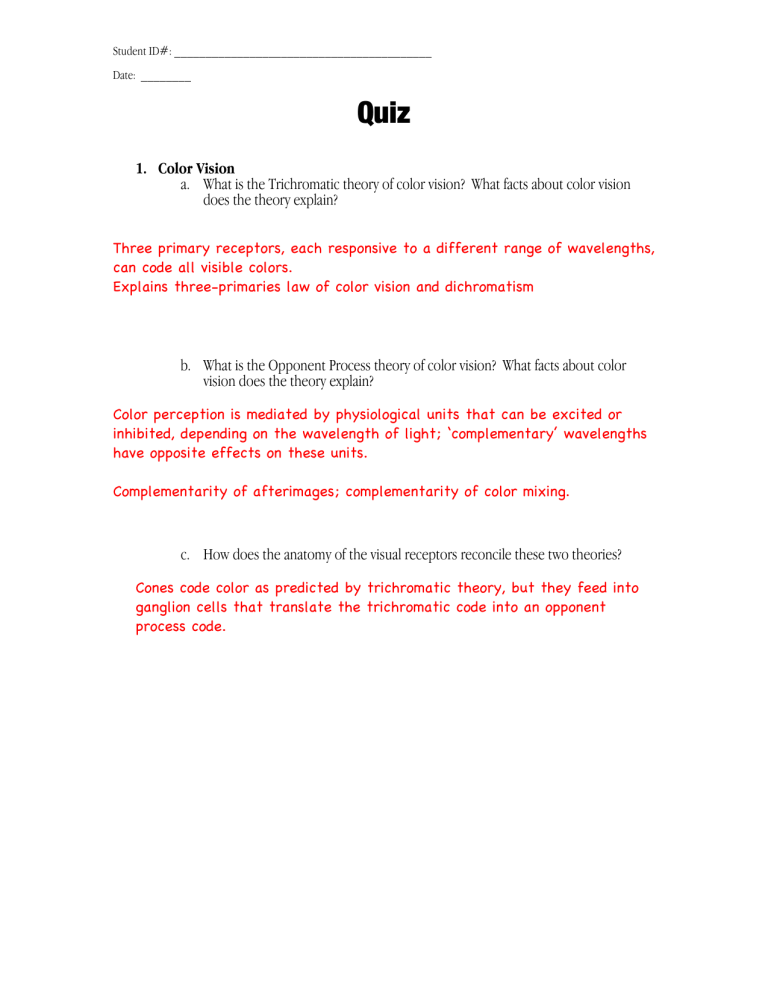
Student ID#: _________________________________________
Date: ________
Quiz
1.
Color Vision a.
What is the Trichromatic theory of color vision? What facts about color vision does the theory explain?
Three primary receptors, each responsive to a different range of wavelengths, can code all visible colors.
Explains three-primaries law of color vision and dichromatism b.
What is the Opponent Process theory of color vision? What facts about color vision does the theory explain?
Color perception is mediated by physiological units that can be excited or inhibited, depending on the wavelength of light; ‘complementary’ wavelengths have opposite effects on these units.
Complementarity of afterimages; complementarity of color mixing. c.
How does the anatomy of the visual receptors reconcile these two theories?
Cones code color as predicted by trichromatic theory, but they feed into ganglion cells that translate the trichromatic code into an opponent process code.
Student ID#: _________________________________________
Date: ________
2.
What is auditory masking, and how does the anatomy of the ear explain the phenomenon?
Auditory masking is the ability of one sound to mask another.
A.M. is asymmetrical: low-frequency sounds (e.g., from a bassoon) mask highfrequency sounds (e.g., from a piccolo) more effectively than the reverse.
The effect of these two sounds on the basilar membrane explains the asymmetry: the wave produced by a low-frequency bassoon note encompasses the entire portion of the basilar membrane that is encompassed by the highfrequency piccolo note.
Student ID#: _________________________________________
Date: ________
3.
Classical Conditioning a.
What is classical conditioning?
A training procedure or learning experience in which a neutral stimulus (the conditioned stimulus) comes to elicit a reflexive response through its being paired with another stimulus that already elicits that reflexive response. b.
Name two ways in which cognitive views of classical conditioning differ from behaviorist views of classical conditioning.
Cognitive view depicts CC as an experience in which a conditioned stimulus evokes a mental representation of an unconditioned stimulus, whereas the behaviorist view depicts it as the formation of a direct bond between conditioned stimulus and response.
In the cognitive view, the predictive value of the conditioned stimulus causes the animal to expect an unconditioned stimulus. In the behaviorist view, repeated temporal contiguity of conditioned and unconditioned stimuli is all that is necessary to establish the stimulus-response bond. c.
Describe how Rescorla’s (1973) experiment supports a cognitive view of classical conditioning.
In the cognitive view, an expectation/representation of the UCS causes the
UCR. Rescorla tested this view when he (1) took rats that had been conditioned to freeze (UCR) in response to light (CS) rather than just loud noise (UCS), (2) habituated half of the rats to the UCS, and (3) re-introduced the CS. According to the cognitive view, habituation to noise should reduce freezing because it involves attenuating the mental representation of the
UCS (the hypothesized causal variable). Results confirmed this prediction. d.
What are three conditions in which the pairing of a new stimulus with an unconditioned stimulus does not result in classical conditioning? How do these observations support a cognitive view of conditioning?
In the cognitive view, CC occurs only when the new stimulus provides information that predicts the arrival of the UCS. In this view, CC should not
(and in fact does not) occur when (1) the UCS is presented simultaneously or before the CS; (2) if the UCS is as likely to occur when the potential CS is absent as when it is present; and (3) if one CS already reliably precedes a
UCS, the animal will not become conditioned to a second CS that is presented simultaneously with the first CS (the blocking effect).
